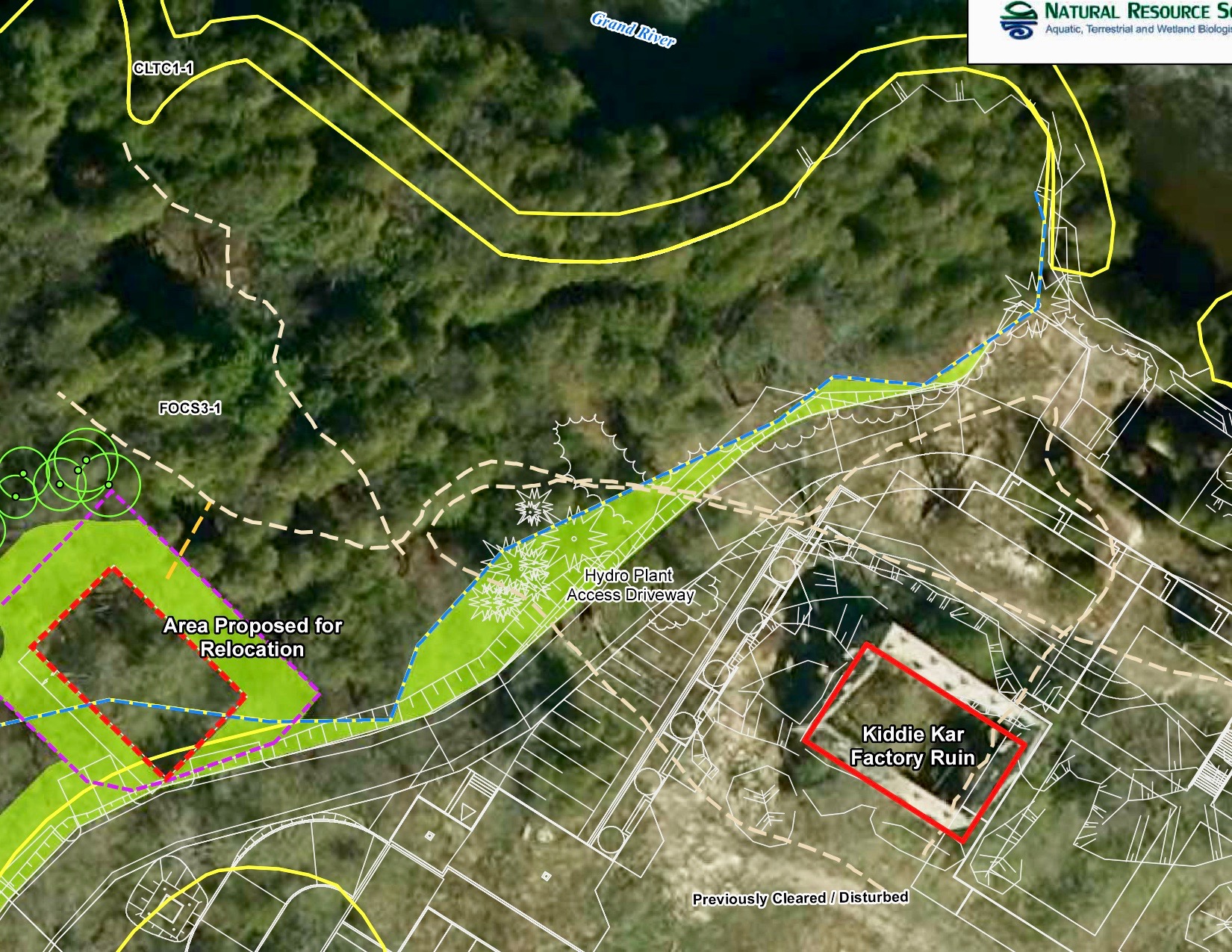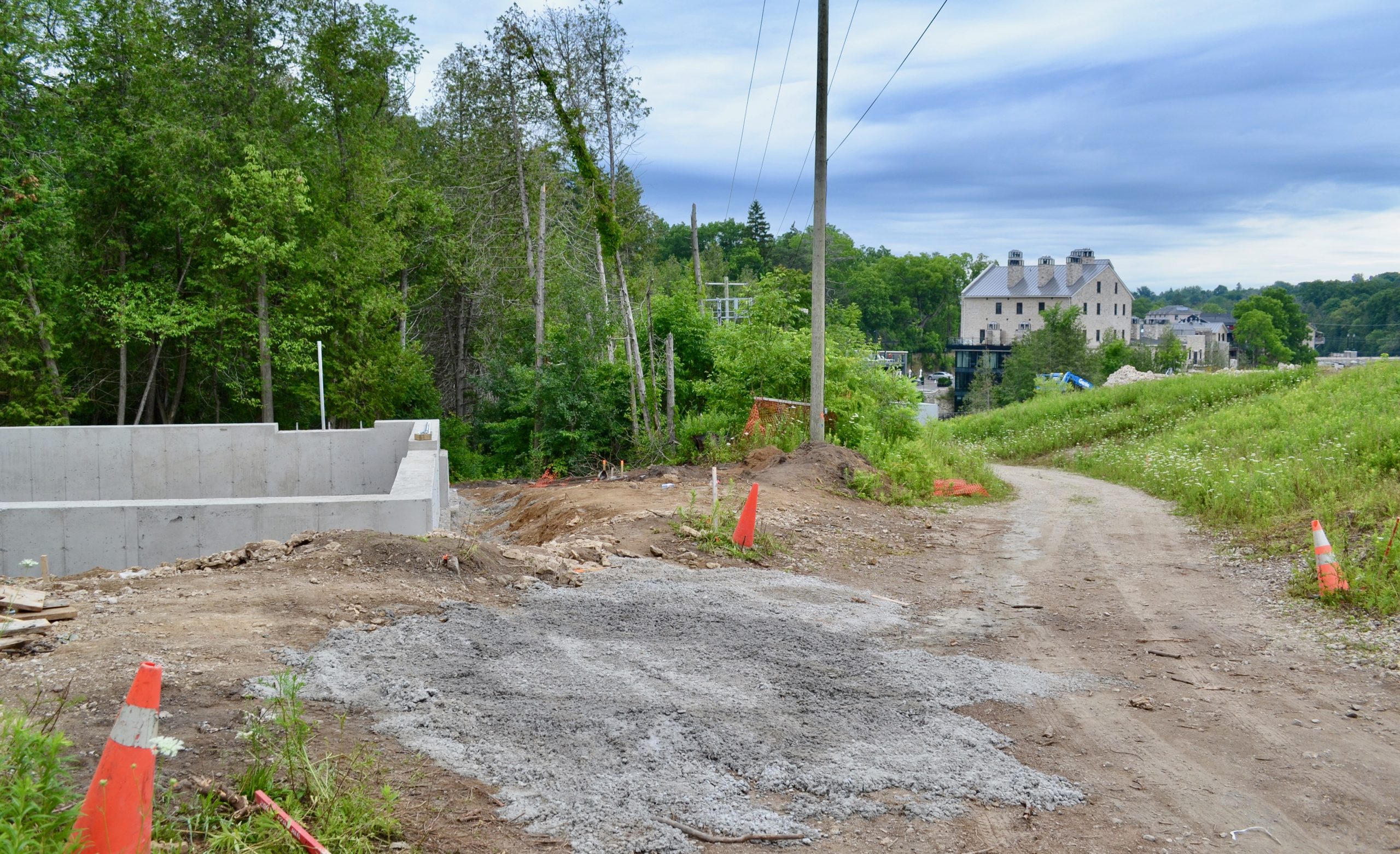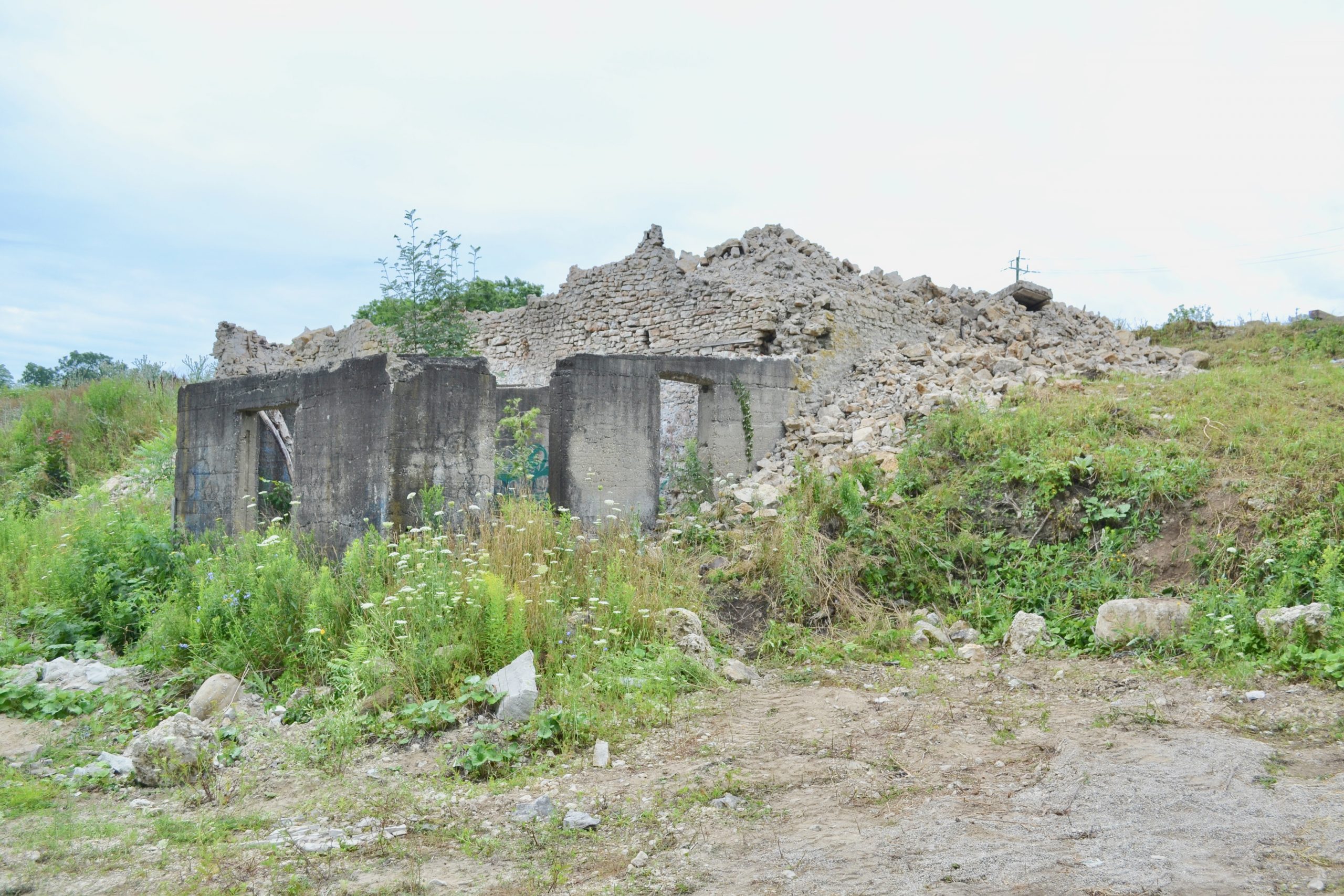ELORA – The landscape on the south side of the Grand River in Elora has begun to transform, but anyone worried the historical Potter Foundry (Kiddie Kar Factory) is being removed forever can rest easy – it’s only moving up the hill about 70 metres.
The relocation and restoration, which began on July 13, will ensure the historical structure remains accessible to the public and Pearle Hospitality can move ahead with its Elora South Condominiums plans for the site.
Centre Wellington council endorsed the heritage impact assessment last August.
“There were two options, either you relocate it somewhere or you tear it down,” said Brian Blackmere, planner and project manager for Pearle Hospitality.
“So the thought was because it is an important heritage resource … we will try to find another place on the site to relocate it.”
Pearle is covering the cost of the million-dollar relocation and restoration to keep the foundry, which was originally constructed in 1873, accessible to anyone living or visiting Elora.
As it stands now, the ruins have been in a state of deterioration for decades and are no longer safe for public access.
While moving a structure isn’t the first choice in terms of heritage conservation, Heritage Centre Wellington chair Philip Brown said it is important to keep the Potter Foundry accessible to the public.
“It was on the trail system and it had come to be used by the public for many years over the past several decades, so … if we lost that access then that was going to diminish the value of the actual heritage attributes of that resource,” Brown explained.
And luckily for Pearle, all the necessary regulatory bodies were on board with moving the foundry up the hill and into an environmentally sensitive area along the Grand River.

This site plan provided by Pearle Hospitality illustrates both the current and new sites of the ruins. Submitted image
“We went back to the GRCA and said, ‘Look, we’ve got this heritage resource, we’d like to relocate it and rebuild it, but we’d like to do it inside the environmentally sensitive area,’” Blackmere said.
“So we came out with their biologist and their botanist and the planner and we surveyed this entire area to see where we might put this building and have the least environmental impact.”
The ideal solution would have been to move the Potter Foundry directly across the property to the west, to maintain distance from the river, but there were too many mature white cedars to tear down to make room.
Through analysis a site about 70m southwest of where the Potter Foundry originally stood provided a similar slope, allowing the foundry to be recreated accurately.
“Amazingly, the GRCA and the Ministry of Natural Resources agreed to allow us to do this … in my mind that’s a major win allowing us to tear down some reasonably good trees and recreate the foundation up there,” Blackmere said.
The clincher was that the new location of the foundry will be on a public trail system.
People walking the trails will come upon the Potter Foundry and feel a sense of discovery, Blackmere said.
“It’s something that I think trail users will appreciate and the way the building is being done … there were access points at both the west and the east end and we’re allowing the trail to run right through the building,” Blackmere said.
“So you’d be able to walk through. We thought that would be a great place for interpretive signage, probably some explanation as to the history of this site, which was all industrial.”
Brown described the relocation as a new beginning for the historical structure.
“To me that’s the exciting part about being on the heritage committee, is how we can not just freeze frame and keep things … like a museum; it’s make things relevant again and allow for developers and citizens alike to enjoy the property and put it to new uses even,” Brown said.
“That’s the whole point … make it into something that we can all enjoy.”
The relocation and reconstruction is not being done haphazardly.
“It’s amazing,” Blackmere said.
“We thought it was easy, you just pick it up and move it over, but it’s actually every stone has been itemized and numbered.”
So when the contractor goes to reconstruct the foundry on the newly-laid concrete foundation, it will look as close as possible to the original structure, with a few added safety precautions.

A foundation for the relocated Potter Foundry, left, has been laid at the new location. The top of the ruins at the current site are visible in the background on the right side. Photo by Jaime Myslik
At the original Potter Foundry site, the building was falling apart. The roof had caved in and the walls were not stable, making it too dangerous for public access.
The new reconstruction will be done with not only a mind for historical accuracy, but also for public safety.
The concrete foundation is one of those precautions, as well as a brand new roof that will add stability to the walls.
The roof will be built with the slope and pitch interpreted and measured from old photos of the original building before it became a ruin.
“It’s going to be a ruin, but it’s going to be a safe ruin and still allow people to come through,” Blackmere said.
Brown also said heritage professionals working along with Pearle and the contractor will ensure the work is being done accurately.
“If they come across anything that is unusual or that they don’t expect … then there’s an immediate reassessment, they don’t just sort of keep going,” Brown said.
“So the work is constantly being assessed and reassessed.”
He said the heritage consultant is also on the lookout for archaeological artifacts.
“They would have to stop work and come up with a plan for how to deal with that if there were any artifacts discovered,” Brown said.
The hope is to have the Potter Foundry fully reconstructed in its new location by Spring 2021, before even the trail is ready.
“The first part of the trail is going to be built as part of the condominium development,” Blackmere said.
“I know people have been a little anxious about getting that reinstated, but while this is an active construction site … for liability reasons we can’t have people here.
“So we’ll just have to keep saying, ‘It’s coming, it’s coming,’ because it will.”
Pearle is hoping the first phase of the condominium development will begin later this year or early next year.
Once the Potter Foundry is reconstructed in its new location, Brown said Heritage Centre Wellington would be writing a designation bylaw for council approval so the structure becomes part of Centre Wellington’s inventory of public heritage buildings.
“That’s important too … that that’s been agreed to and written into the agreement for the conservation plan,” he said.



